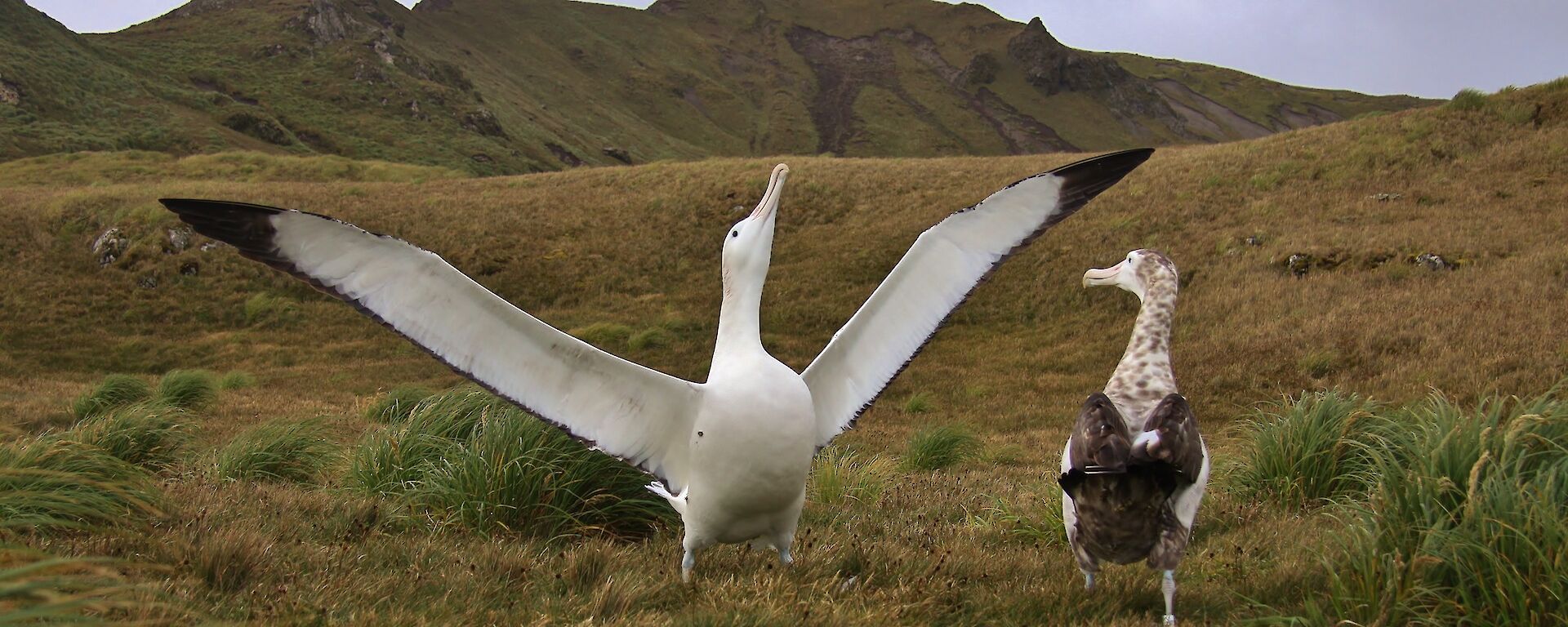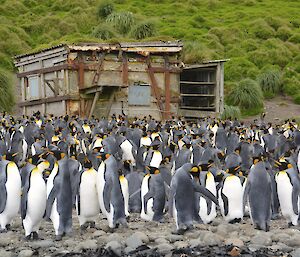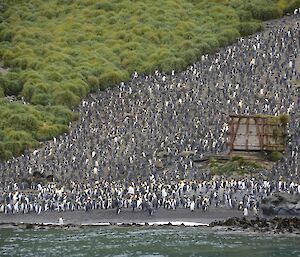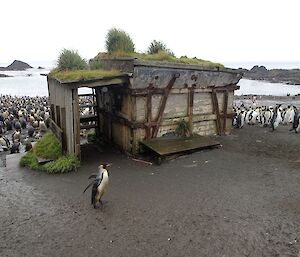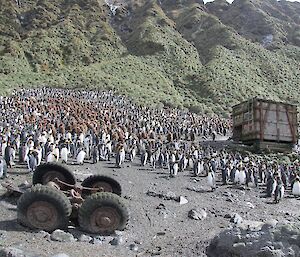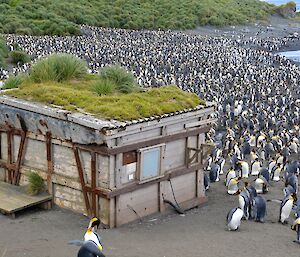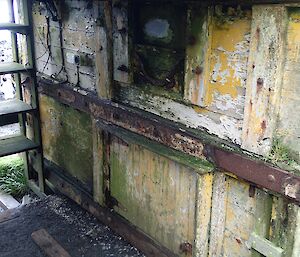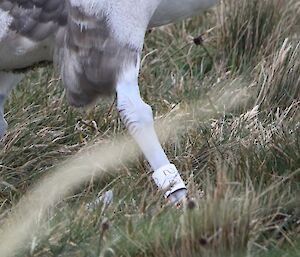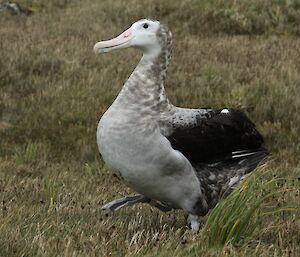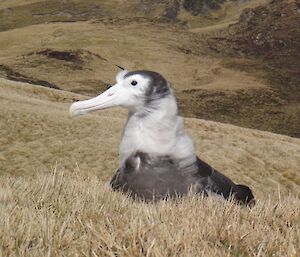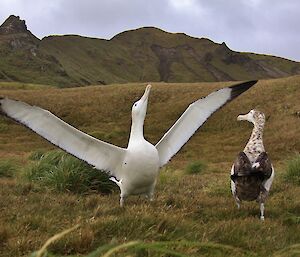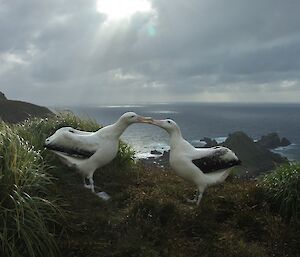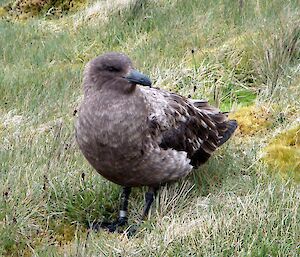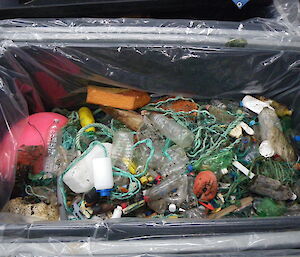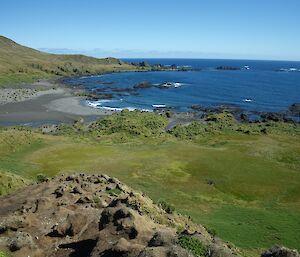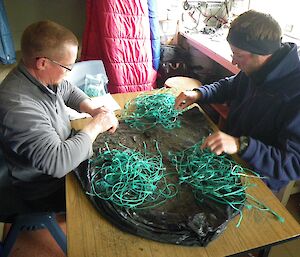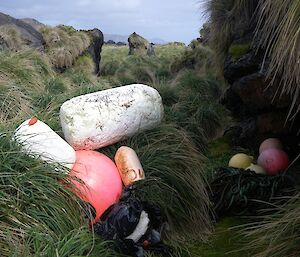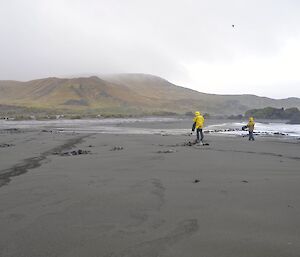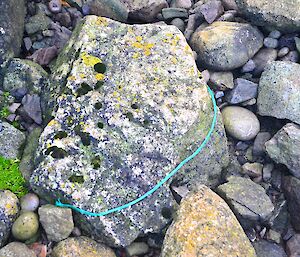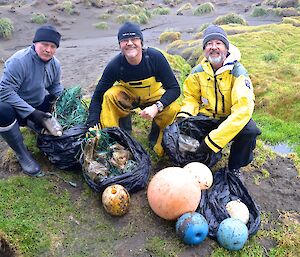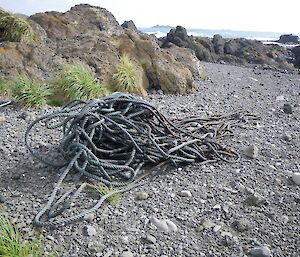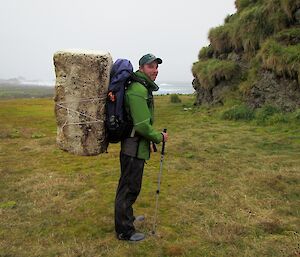Everyone on the island, and all the tourists who visit, are familiar with the little old field hut at Sandy Bay. It is solid as a rock and banded with rusty iron, tussocks grow on top and roosting skuas keep watch over the surrounding king penguin colony. It is a picturesque sight.
The door bolt is rusted shut, but expeditioners can peer in the grubby window at a dark, decrepit interior festooned with penguin-moult feathers caught up in spider webs — very atmospheric. Feathers from moulting penguins can be found everywhere, as we know from doing our weekly communal clean-up duties. It is amazing how they can sneak through the tiniest crevices in buildings.
Some people, and most or all of the MIPEP team, will also have seen its pair, the little old hut at Lusitania Bay just north of the king penguin colony. The huts are old Walrus aircraft engine packing crates, put in place in 1949. They served as field huts for many years and still could have, no doubt, except that the king penguin colonies at Sandy Bay and Lusitania Bay overtook them both and they were abandoned in favour of the new huts at Brothers Point and Waterfall Bay. There is the upturned wreck of an old DUKW (precursor to the LARCs) below Lusitania hut on the beach, which ended up there after a misadventure in 1951.
I’ve had the pleasure of staying in the Sandy Bay hut for many nights — up until 1995 — and the distinctly less pleasurable experience of staying in the Lusi hut for the odd night. The Sandy Bay hut was really snug, best for one person but possible for two (the second bunk was built fairly close to the roof) and just possible for another body on the floor if they scrunched up.
Legend has it that Geof Copson, who was a Parks and Wildlife ranger on Macquarie for a number of years in the 1970s and 1980s, renovated the bunks so that the hut was really only comfortable for one person. He spent so much time there that someone carved a sign reading ‘COPPO’s PLACE’ to put up over the door, and when Geof finally spent his last winter on Macquarie, he put up a ‘For Sale’ sign outside in the cold-porch.
The Lusi hut was really only an emergency shelter and was damp, dark and smelly, with rats as the permanent residents. There was no cold-porch, so you had to enter in your muddy boots, crouching low down to get under the iron bands around the outside walls. Sleeping bags were kept in a plastic drum, and there was an old kerosene heater and primus, a few tins of food, and an HF radio in a box. I came the closest I’ve ever gotten to getting carbon monoxide poisoning there, up on the top bunk trying to keep out of the way while my two companions wrestled with the kero appliances — not nice — nausea and a swimming sensation in the head.
I loved the Sandy Bay hut and spent at least a few days there every month during my year here in 1990, as I was doing regular plant measurements on the slope above the king penguin colony. I was there during a big earthquake once — all the tins of spam and peas fell off the shelves, but the hut didn’t move. However, apparently it did move during a big easterly storm in 1978, and the story is in the old hut logbook — the hut was tilted and turned 90 degrees and filled with sand, but it was restored and renovated soon after. The only annoying thing was the rats scratching in the walls at night. The inside walls were lined with tin and you couldn’t get to them. That would not be a problem now, since eradication of the rats, but sadly the Sandy Bay hut has now been inherited by the feathers and the cobwebs.
Jenny Scott

